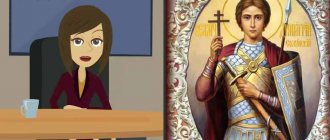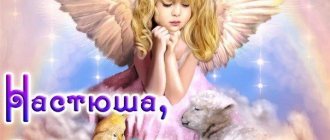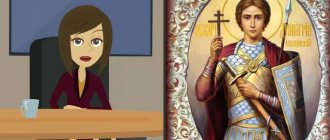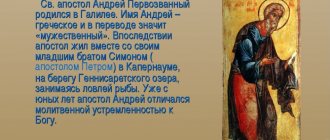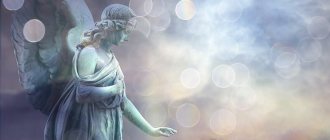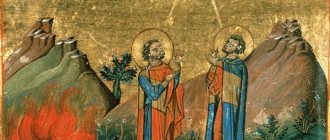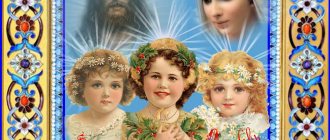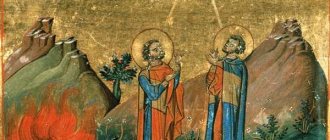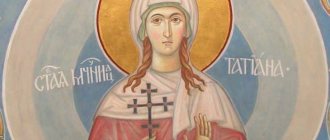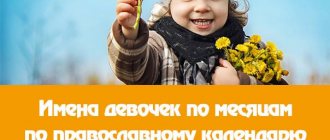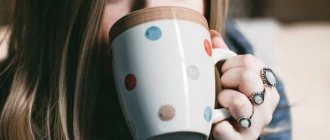In the Orthodox tradition of the Eastern Slavs there are three holidays called Spas. The triad of August celebrations is special in its essence, because on these days the most important Christian events are combined with folk customs. The Assumption Fast, otherwise called “Spasovka,” begins in mid-August. An important date falls during this period - the Transfiguration of our Lord Jesus Christ. This holiday is one of the Twelve, and is of great value for every Orthodox person.
What is Spas
First you need to understand the etymology of the term. Despite the fact that the Dormition Fast is carried out by the Church in honor of the Mother of God and the remembrance of her Dormition (death), traditionally the August Savior is dedicated to Jesus Christ. The Slavic folk holidays of the agrarian calendar, associated with the end of the season and the harvest, after the arrival of Orthodoxy on Russian soil coincided with the following events:
- By wearing down the honorable trees of the Life-Giving Cross;
- The Transfiguration of our Savior Jesus Christ;
- Transfer of the “Icon of the Savior Not Made by Hands” to Constantinople.
In the syncretic (combining heterogeneous elements of something) tradition of folk Orthodoxy, canonical events turned out to be inseparable from Slavic customs. Our ancestors in these days honored the Son of God, but at the same time did not forget about field and harvest work. In addition to church traditions, folk rituals are unusually strong these days. Some pre-Christian holiday names have been preserved. So, the First Spas was called Kalinnik, and the Second - Oseninami or Pea Day.
The Savior, His icons and holidays
In fact, the word “Saved” has several meanings:
- In Church Slavonic usage this is how we briefly call our Lord Jesus Christ. Savior, that is, Savior.
- This is the name of some icons of Jesus Christ - the Savior Not Made by Hands, the Savior in Power, the Savior in the Crown of Thorns.
- This word is used in the name of three Orthodox holidays, popularly known as Honey, Apple and Nut Spas.
- This is the name given to churches consecrated in honor of the Savior. For example, the well-known Church of the Savior on Spilled Blood (Cathedral of the Resurrection of Christ) in St. Petersburg.
When to celebrate 3 Spas: Honey, Apple, Nut
The dates of all three Spas are not moving, so they are stable from year to year. It all starts on August 14th and lasts 2 weeks almost until the very beginning of autumn. This period in the month is called the Assumption Fast.
- Honey Spas is the first of three holidays. According to the traditions of the Russian Orthodox Church, it was established in honor of the Origin of the Life-Giving Cross.
According to customs, on this day (according to the old style it fell on August 1) a religious procession was carried out. The Cross of the Lord was carried along the streets of Constantinople (it was from there that this tradition came to the Slavs) to sanctify them, turning away illness and adversity. Today we celebrate the First Savior on August 14th .
- Apple Spas is called the Great because it coincides in date with the Twelfth Feast of the Transfiguration of the Lord. It is celebrated on August 19 (according to the old style - the 6th).
- Nut (or Bread) Passover falls on August 29th . It is celebrated the day after the Dormition of the Virgin Mary. Our ancestors considered it the beginning of autumn, so it is no coincidence that the epithet “Autumn” or “Cold” was used.
Ritual “Seven Nuts” for good luck in Nut Spas
To accomplish this you will need seven hazelnuts and a piece of clean white cloth. The ritual should be performed in the morning, immediately after waking up.
Sit near a slightly open window or go outside. Take a handful of seven nuts, clasp your hands, close your eyes and imagine your ultimate goal in as much detail as possible. When all the smallest details of the desired result have been taken into account, unfold the cloth on your lap and place one nut on it, saying the words of the spell:
“Mother Earth gave birth to you, the red Sun warmed you, violent winds bypassed you, pure rains filled you with strength. As the harvest lies in my hands, so luck and strength come to me! According to my word, according to my deed, so be it!”
When the spell is pronounced, tie the nuts tightly in a knot and carry it with you until the desired is achieved.
Honey saved
On this day, honors are paid to the “All-Merciful Savior and the Most Holy Theotokos” in memory of Grand Duke Andrei Bogolyubsky. In 1164, the ruler, together with his army, opposed the pagans inhabiting Volga Bulgaria. It was his custom to carry the Life-Giving Tree ahead of the soldiers, and he always took with him an icon of the Mother of God. The incident described in the legends happened on August 1, when, with God’s help, the prince managed to defeat the pagans: rays of divine light emanated from the icon with the Blessed Virgin Mary, which gave strength to the Russians to win the battle. On the eve of the holiday, an evening service is always held, and the Cross of the Lord is brought to the throne so that every believer has the opportunity to venerate it. On the day of the Bearing of the Life-Giving Cross, at the morning service, an image of anointing parishioners with oil is performed. Clothes for worship on this day are worn in purple or dark red. After the completion of the liturgy, the consecration of water, honey and other gifts of God begins.
By the beginning of August, honey was already ripening in the hives, and the bees stopped working and were preparing for the winter. Only after blessing the collected supplies in the church, people could try what the bees produced this year. Honey was considered a gift from God, a grace sent from above, so people went to temples to thank the Lord for his mercy. In addition to the procession of the Cross, reservoirs and wells were blessed on this day.
People call this day Makovei. It is a mistake to think that this name is associated with poppy or the fact that it just ripens in the meadows. Of course, in colloquial etymology this meaning has already been established, but initially there was a completely different connection. August 1 (14) is the day of remembrance of the Seven Holy Martyrs of the Maccabees, who, according to the Old Testament, accepted their martyrdom back in 166 before the birth of Christ.
Sayings and signs of Honey Spas
Honey spas is a kind of beginning of the final summer phase. Nature is moving towards autumn, towards a long sleep, so people prepared for the cold in advance. After the holiday, people no longer swam in open reservoirs, because the water began to bloom and get colder. It was considered a good omen that if it rained on Makovey, then the next summer would be without fires.
Such a saying as “plow for winter, this winter” meant the beginning of sowing work for planting winter varieties of wheat and rye. On this day they prepared manure and compost for the winter, and bathed the horses. But if the weather was damp, then sowing rye was postponed for several days. Another proverb said that “Savior has everything in stock.” This meant unpredictable weather. It could rain or get strong winds.
What date is Apple and Honey Spas - 2022: holiday calendar
August is rich in holidays dedicated to the gifts of nature and the harvest. People say about this time “Three Spas - three reserves” and celebrate Honey Spas on August 14, Apple Spas on August 19, and at the very end of the month, on the 29th, Nut Spas. On these same days, Orthodox Christians celebrate other events that have nothing to do with the harvest (the Slavic word “Spas” (Savior) is one of the theological names of Jesus Christ).
Honey Spas
Honey Spas is also called First Spas, Spas on the Water, Poppy Spas, Makovei.
Spas is called Honey Spas due to the fact that the honeycombs in the hives are usually already filled by this time, and beekeepers begin collecting honey. It was believed that if the beekeeper “does not break the honeycomb,” then the neighboring bees will take out all the honey. According to tradition, from this day on it was allowed to eat honey, having first consecrated it in the church.
© RIA Tomsk. Pavel Stefansky
Honeycombs On the First Savior, “women’s sins” are atoned for: it is believed that women are forgiven all their unforgivable sins.
The honey Savior is called “Savior on the Water” in honor of the small blessing of water. Previously, in Rus', wells were blessed and cleaned on this day, as well as a religious procession was held to bless the water. After the procession they bathed in this water and bathed livestock to wash away sin and be healthier.
Our ancestors considered this day to be the last part of summer: it is sunset, the water is “blooming”, the birds are falling silent, the bees are not wearing their fees, the rooks are gathering in flocks and preparing to fly away. That is why there was a custom on Honey Savior to bring part of almost all the agricultural harvest supplies to the church for consecration. As a rule, women did this.
According to folk tradition, on Honey Spas, housewives baked Lenten cookies from wheat dough, pouring thick honey mixed with crushed poppy seeds on top. In addition, shortbreads were prepared from honey and poppy seeds - the famous poppy cakes.
Orthodox Christians associate with the Honey Savior the beginning of the two-week Dormition Fast - Spasovka (August 14-27). This is a strict fast dedicated to the memory of the Blessed Virgin Mary. It is believed that the Assumption Fast is second in severity only to the Great Fast, but due to the abundance of food and ripened fruits it is considered easy.
During the Dormition Fast, those who adhere to it are given a special order for eating. On Mondays, Wednesdays and Fridays, dry eating is prescribed. On Tuesdays and Thursdays it is allowed to eat hot food without oil. On Saturdays and Sundays - food with butter and wine.
Relaxation is allowed on the Feast of the Transfiguration of the Lord, which coincides with the second Savior - Apple (August 19), on this day you can eat fish.
Apple Spas
The Orthodox celebrate the Feast of the Transfiguration of the Lord in honor of the fact that on this day the disciples learned that Jesus Christ is the son of God.
In the folk tradition, on the Second, or Apple, Savior, apples are blessed - the most common fruit in Rus', as well as other fruits of the new harvest, which are just beginning to ripen. It is believed that apples from the new harvest cannot be eaten until this date.
By the way, bringing the fruits of the first harvest to church is a custom that dates back to Old Testament times. However, it is believed that these gifts are of secondary importance; believers simply symbolically express gratitude to the Creator in this way. The main expression of gratitude, from the point of view of the church, should be repentance and prayer.
According to legends, after consecration, apples acquire some kind of magical power, and if you make a wish while taking the first bite, it will certainly come true.
With the onset of Apple Savior, it is customary to begin preparing all kinds of dishes based on the fragrant fruits: they bake pies and pies with them, they begin to make the first jam, make salads and desserts, decorate their holiday table with them and give them to every guest.
According to popular belief, Apple Savior (also called the “first autumn”) means the onset of autumn and the transformation of nature. It is generally accepted that the nights become colder after the Savior.
There are also many “meteorological” signs associated with this day: like the second Savior, like January; A dry day on Apple Spas foretells a dry autumn, a rainy day foretells a wet one, and a clear day foretells a harsh winter.
Nut Spas
On the Third Savior, the church celebrates the transfer from Edessa to Constantinople of the Image of Jesus Christ Not Made by Hands, which occurred in 944.
According to legend, the prince of Edessa Avgar fell ill with leprosy. He was treated for quite a long time, but without success, until he heard about a miracle worker from Palestine. It was Jesus Christ. The prince sent a messenger to him. After washing, Christ wiped his face with a towel on which his face was imprinted. The messenger took this towel to the prince, and only one touch of this towel eased the suffering of the patient, and then healed him.
The towel (ubrus) of Christ became a banner on the gate tower of Edessa, since it saved the ruler. Thus was born the custom of protecting the gate towers of Christian cities with images of Christ and icons of the Savior (Savior). Therefore, the gate tower of the Moscow Kremlin is called Spasskaya.
Popularly, this Savior has several names. First of all, Nutty. The fact is that by this day the nuts (hazel) are ripening in the forest and their mass collection begins. During the same period, the work of harvesting grain comes to an end. Hence the second name - Bread Savior.
On this day, it was customary to bake pies from the flour of the new harvest, and also to sow winter rye: “The Third Savior stored up bread.”
The people celebrated this day as a day of thanksgiving to the Lord for their daily bread.
Another popular name for the Third Savior - Canvas (Savior on canvas) - was given because on this holiday there were fairs where linens and canvases were sold. It was believed that on this day you need to buy at least something, otherwise you will spend the whole year in poverty.
The main dish of the holiday is, of course, consecrated bread from the new harvest, as well as nuts.
A simple “nut” fortune-telling was traditional on August 29. The girls made a wish, chose a nut and broke it. If the fruit of the nut was full and tasty, it meant success and that everything planned would come true. And vice versa, when a nut came across that was empty, black, dry and tasteless, the wish was not destined to come true.
There are many folk signs associated with Orekhovoy Spas. So, it was believed that if the cranes flew away, it meant there would be frost on Pokrov. But a stormy August is a harbinger of a long, warm autumn.
There is also an interesting superstition that on Nut Spas every witch prepares a magic wand. People said that magic wands were made from hazel, which on this day is filled with special power.
And ordinary people made bath brooms from walnut on this day. It was believed that such a broom would help cure any disease, even the most severe one, but they could not be dried and stored next to brooms knitted from the branches of other trees.
Apple saved
The great feast of the Transfiguration of Jesus Christ comes from the events described in the Synoptic Gospels that happened shortly before the Savior accepted His suffering. In the canonical texts of different authors, they talk about what happened very similarly, without contradictory details, thanks to which it is possible to put together a true picture of what happened. Christ wanted to support the faith in his disciples, so he called the three apostles to pray together on Mount Tabor. John, Peter and James went with Him, but were too tired on the road, and therefore fell asleep, leaving Jesus to pray alone.
They woke up from an unnatural radiance that enveloped Christ while he was talking with the prophets Elijah and Moses. The next thing that happened then was that the voice of the Heavenly Father thundered, calling Jesus His beloved Son. The Lord ordered the apostles to listen to Him, and they saw in the Savior the transformation of all people when they find themselves in the Kingdom of Heaven.
In churches, this day began with a liturgy emphasizing and exalting the greatness of the Transfiguration. The servants of the Lord wore white clothes, the color of which was associated with the radiance emanating from Christ on Mount Tabor. The festivities continue after the Great Savior for another week. Having completed the service, the priests blessed the apples and grapes. As in the case of honey, on this day, August 19, they began to harvest apples, and then took them to churches for consecration. Apples were also considered a gift from God. At the same time, it was forbidden to eat them before the consecration at the festive service. Wealthy people, whose apple harvest was extensive, distributed the fruit to the poor, sick and poor neighbors. In the south of Rus', where grapes grew, they were consumed along with apples.
There was a tradition of carrying blessed apples to the graves of dead children, and everyone who lost a child strictly followed this custom. Subsequently, gifts began to be carried to all deceased relatives.
Sayings and signs of Apple Rescue
Based on what the weather would be like on this day, the weather conditions for the Intercession of the Virgin Mary and the coming winter were determined. It was believed that if the weather was dry, then autumn would be the same, and if it rained, expect a wet autumn. Clear skies foreshadowed the harsh, very cold winter months.
Wheat was sown on this day. If the wind blew from the north, it was believed that the harvest would be rich. Bees that suddenly began bringing honey back into the hives were harbingers of prosperity in the house.
After the Transfiguration, the weather finally turned to cold, so they said that “the second Savior saved his fur coat, take mittens in reserve.”
When will the 2nd Spas be in 2022 – Yablochny
The second Savior is the Apple Savior, when the Orthodox gather for morning prayer and service, only the collected apples are blessed. They are then used to make apple pies, strudels, bake pies with them, and make jam.
The date of the Apple Savior is August 19. In parallel with it, Orthodox Christians celebrate the Transfiguration of the Lord , which is described in the Bible. According to church history, the Savior and his disciples went to Tabor. They traditionally prayed on the mountain. At some point, two prophets appeared to them - Elijah and Moses. Then all those present heard the voice of God, calling Jesus Christ His Son.
Apple Savior Day is a fast day, so you need to eat only fast food. They also eat fruits and fresh vegetables, rich in vitamins and substances beneficial to the body. Apples are used to make compote, jam and preserves.
Nut saved
The Third Spas is traditionally considered a holiday more of a folk holiday than a church holiday. It falls within the period of the post-Assumption celebrations. On August 29, a vigil is held in churches in memory of the transfer of the Image of the Savior Not Made by Hands to Constantinople. Thus, churches combine two liturgies, and the color of the priests’ robes is considered to be blue, signifying the purity of the Virgin Mary.
On this day, they baked bread from the flour of the new harvest, collected ripened hazel in the forests, adding nuts to dishes and pies. Fairs were organized in cities where linen canvases were traded (hence the name – Canvas). Just like on Medovy, today reservoirs and wells are sanctified, but public bathing is not organized, because by this time the water is already cold, autumn. It is noteworthy that the villagers had no time for festivities on this day, because everyone was busy with work: sowing winter crops, harvesting crop residues.
In addition to morning services, they also visited churches to pray to the martyr Diomede for the recovery of loved ones. In front of the Feodorovskaya Icon of the Mother of God, prayers were offered in requests for successful childbirth and solutions to women’s everyday problems.
Sayings and signs of Nut Spas
On this day we watched the sky. If the cranes were heading south today, they were expecting a frosty winter. Stormy skies and rainy weather that day promised a long, warm autumn.
People thanked the Lord for grain supplies, which was reflected in folklore. If the hazelnut harvested well, it meant that the next summer would be fruitful with a large harvest of wheat and rye.
There were also bad omens. Thus, it was considered a bad sign to collect spoiled nuts when harvesting. This meant that trouble would soon happen. To protect themselves, people ate a bad nut and gave the next one to the first person they met.
Savior Not Made by Hands: icon
The image of God, not created by hand, is considered the first Orthodox icon, which occupies a special place in the history of icon painting.
History of the icon
Iconography: Savior Not Made by Hands Dates: XII century. Second half of the 12th century. Icon painting school or art center: Novgorod school Origin: Possibly painted for the Church of the Holy Image on Dobrynina Street on the Sofia Side in Novgorod. Then it was in the Assumption Cathedral of the Moscow Kremlin. Material: Wood, tempera. Dimensions of the icon: height 77 cm, width 71 cm. The image of the face of Christ in a cross-shaped halo occupies almost the entire plane of the board. The halo, except for the lower edge, touches the margins of the icon. The gaze of the large eyes is turned to the left. The high arches of the eyebrows are curved. The hair is wavy, brown, the strands are marked with parallel black and gold lines, forming two curls at the bottom. The beard and mustache are drawn with thin black lines. The painting of the face is dominated by dark golden ochres. Reverse side Inv. No. 14245 © State Tretyakov Gallery, Moscow Literature: State Tretyakov Gallery. Collection catalogue. Old Russian art of the 10th - early 15th centuries. Volume I. No. 8.
The icon owes its origin to Jesus Christ Himself. We find mention of this in the works of the theologian Eusebius of Caesarea, a contemporary of Jesus Christ who lived in Palestine.
It so happened that the old king of Edessa, Abgar, became very ill. Then he called a servant to him and ordered him to go to Jesus Christ, the fame of whose miracles spread far beyond the borders of Palestine. The old king hoped that he would receive healing if the Lord blessed him. But the letter written by the Savior did not bring the long-awaited relief and did not change the condition of the old ruler of Edessa.
Having heard that the Jews were looking for Christ in order to kill him, he sent another messenger to Jesus, who was an artist by profession, hoping that he would receive at least the image of the Lord. But the court painter did not have the strength to comprehend the appearance of Christ, which he very much regretted. Then Christ washed his face with water from the bowl and wiped it with a towel, and everyone saw a miracle: the face of the Savior was miraculously imprinted on the cloth.
Thus, thanks to divine power, and not to human creativity and skill, the first icon not made by hands appeared, comparable only to the Shroud of Turin. This board was delivered to Abgar, and he was immediately healed, barely touching the image.
Iconography
The classic version of the icon is a portrait of Jesus, which is made on canvas. According to the canon, icon painters use two ways to depict an image: on ubrus (light background) and on chrepii, that is, tiles (dark background).
Every detail: Christ's hair, background, etc. carry their own meaning. The main features of the image of the icon of the Savior Not Made by Hands:
- symmetry of facial features, identified with the harmony of the world. The eyes look either directly at the person praying or to the side,
- The halo surrounding the Savior's head is closed in a ring. This is usually seen as a symbol of the completeness of the world order,
- This is the only icon of Christ made in the “portrait” style. On other icons the Savior is depicted either in action or as the “king of kings” with the corresponding regalia of power,
- there is only one head, without neck and shoulders. This emphasizes the connection between Christ and his humanity: such an imprint on the board could remain as if a person had actually dried himself with a towel.
- As a rule, the face of Christ is calm and serene. The look is deep and unclouded, reflecting the inner purity of the Savior.
What to pray for in front of the icon of the Savior Not Made by Hands
About everything that is important for a believer.
What prayers should I read?
You can pray either in your own words or with prayers from the Prayer Book. It is worth remembering the main prayer of a Christian, which the Lord himself gave us and which is recorded in the Gospel from His words: “Our Father.” Or you can turn to the Savior with the words: Lord, save and preserve!
Prayer before the icon of the Savior Not Made by Hands
O Most Blessed Lord Jesus Christ, our God! You, from the ancient times of human nature, washed your face with holy water and wiped it with a rubbish, and you deigned to depict it miraculously on the same fringe and sent it to the Edessa prince Abgar for the healing of his illness.
Behold, now we, Thy servants, sinners, possessed by our mental and physical ailments, seek Thy face, O Lord, and with David in the humility of our souls we call: do not turn Thy face away from us, and turn away in anger from Thy servants, be our Helper, not reject us and do not abandon us.
O All-Merciful Lord, our Savior!
Imagine for yourself in our souls, so that you may live in holiness and truth,
We will be Your sons and heirs of Your Kingdom, and so we will not cease to glorify You, our Most Merciful God, together with Your Beginning Father and the Most Holy Spirit, forever and ever. Amen.
Icon Veneration Day
August 29 , new style
There are other icons of Jesus Christ, called Spas:
Savior in Strength
Iconography: Savior in Powers Dates: XIX century. Material: Wood, tempera. Icon dimensions: height 77 cm, width 62.5 cm Icon with the ark. The Savior is depicted sitting on a throne, with an unfolded Gospel on his left knee, and his right hand in a blessing gesture. The figure and the throne are inscribed in a red quadrangle with the heads of cherubs and a greenish mandorla with white clouds. In the corners are symbols of the evangelists. The face of Christ is modeled softly with shading under the lower eyelids and lower lip. Background light ocher. Along the field there is an inscription in semi-chart: “WHERE IS THE PANTOCRANT.” Inv. No. KMZ NV 7889. © Kostroma State Historical, Architectural and Art Museum-Reserve.
Savior on the throne
Iconography: Savior on the throne Dates: XV century. Second half of the 15th century. Icon painting school or art center:
